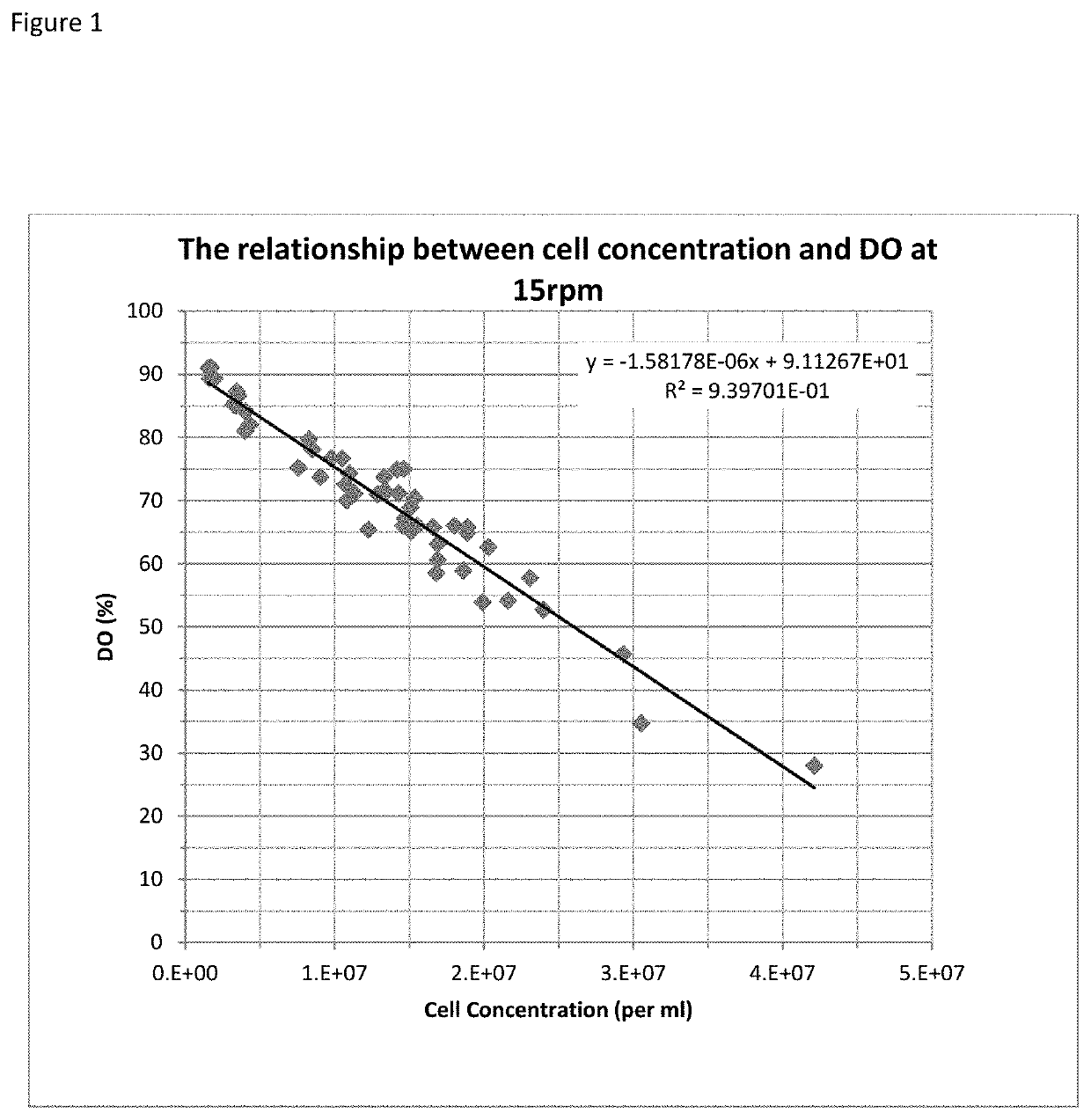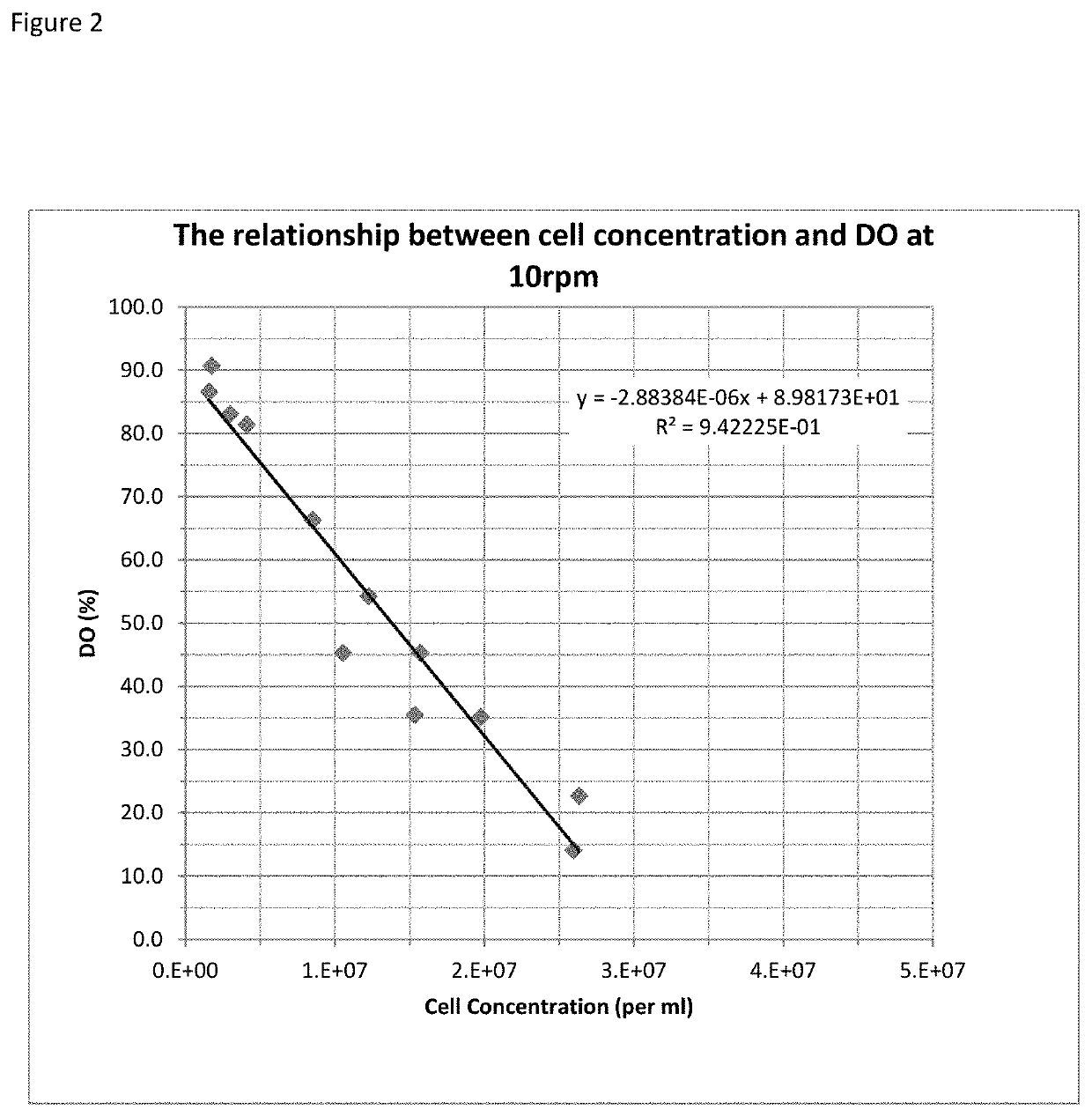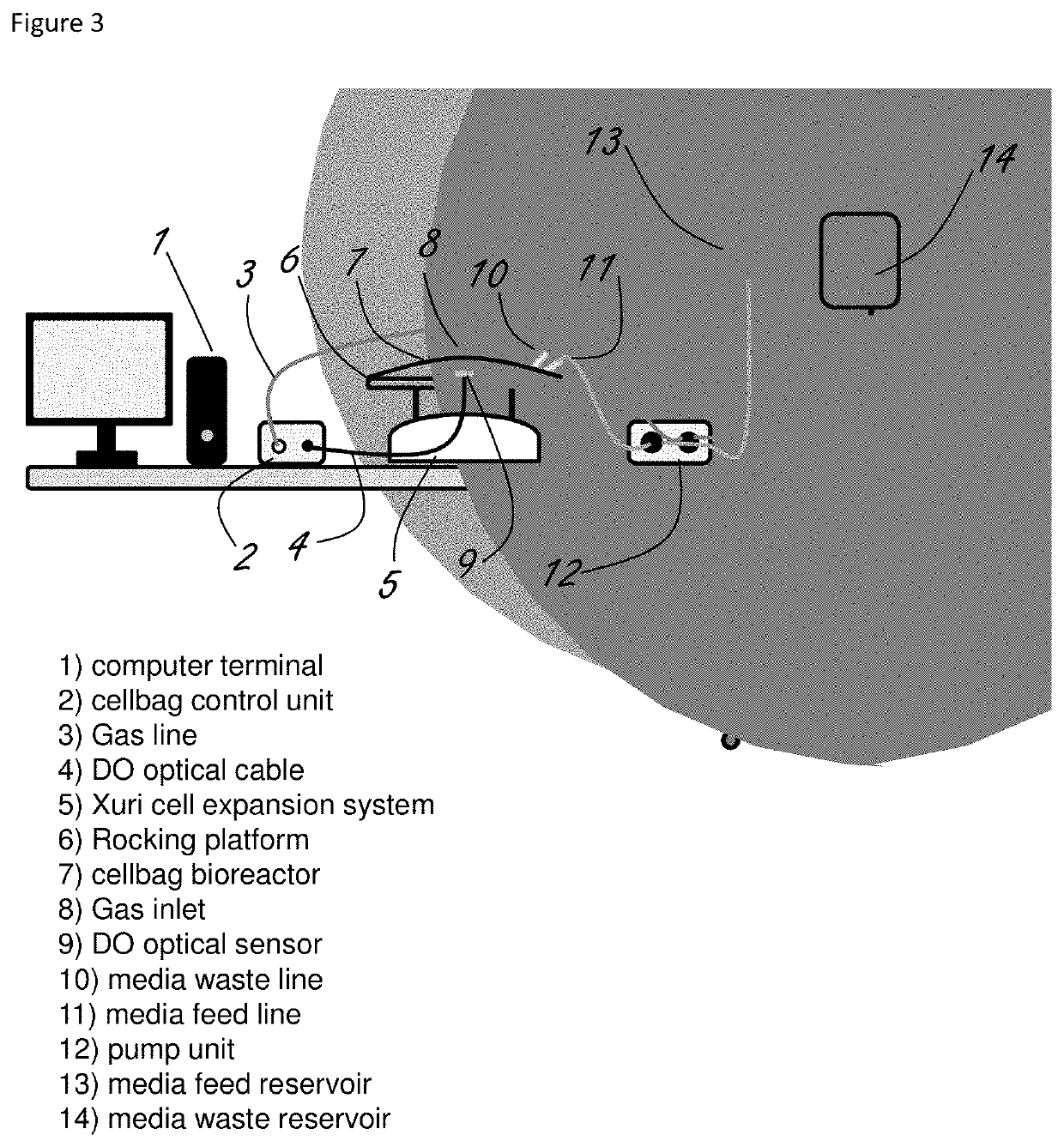Method and system for suspension culture
a technology of suspension culture and cell culture, which is applied in the field of cell culture in bioreactors, can solve the problems of compromising sterility, carrying the risk of culture contamination, and high cost, and achieves the effect of reducing the chance of human error compromising the cultur
- Summary
- Abstract
- Description
- Claims
- Application Information
AI Technical Summary
Benefits of technology
Problems solved by technology
Method used
Image
Examples
example 1
Defining the Relationship Between Dissolved Oxygen Levels and Cell Concentration
[0027]Method: Peripheral Blood Mononuclear cells were cultured in static culture with anti-CD3 / 28 activation beads and 20 ng / ml of IL-2 for 5 days. During static culture the cell concentration was maintained at 5×10E05 / ml though the addition of media. At day 5 of culture the cells were transferred to a 2 L cellbag for culture on the Xuri W25 bioreactor for a further 5-9 days. Cells were maintained at 5×10E05 / ml through the addition of media until the final volume of 1 L had been reached, after which the cell concentration was allowed to increase as the cells continued to proliferate. The rocking platform was set at an angle of 6° and a rock rate of 15 rpm and kept constant throughout the course of the culture. Media perfusion was enabled once the cell concentration had reached 2×10E06 / ml. The cellbags contained optical sensors for dissolved oxygen (DO) and measurement of DO levels were recorded every 24 ...
example 2
Predicting Perfusion Rates Based on Dissolved Oxygen Readings
[0032]The ability to use DO to predict cell density can be further exploited to include an automated method of setting perfusion rates in T cell cultures. Perfusion rates are dictated by cell density, as the higher the number of cells, the higher the metabolic load and the greater the rate of media exchange that is required.
[0033]The standard perfusion rates used in the above experiments were as follows
[0034]
Cell concentrationPerfusion rate 2 × 106 / ml500 ml / day10 × 106 / ml750 ml / day15 × 106 / ml1000 ml / day
[0035]Based on the trendlines of DO vs cell concentrations, the perfusion rates can be set using DO readings instead of cell concentration
[0036]
DO reading at 15 rpmDo reading at 10 rpmPerfusion rate>88>84none75-8861-84500 ml / day67-7547-61750 ml / day1000 ml / day
[0037]An automated set-up can be configured (FIG. 3) whereby the DO readings, which are collected continuously throughout the culture via the DO optical sensor embedde...
PUM
| Property | Measurement | Unit |
|---|---|---|
| volume | aaaaa | aaaaa |
| angle | aaaaa | aaaaa |
| rocking angle | aaaaa | aaaaa |
Abstract
Description
Claims
Application Information
 Login to View More
Login to View More - R&D
- Intellectual Property
- Life Sciences
- Materials
- Tech Scout
- Unparalleled Data Quality
- Higher Quality Content
- 60% Fewer Hallucinations
Browse by: Latest US Patents, China's latest patents, Technical Efficacy Thesaurus, Application Domain, Technology Topic, Popular Technical Reports.
© 2025 PatSnap. All rights reserved.Legal|Privacy policy|Modern Slavery Act Transparency Statement|Sitemap|About US| Contact US: help@patsnap.com



